Impact Readiness Matrix (IRM)
Where Evidence Meets Action
At UPL1FT, we developed the Impact Readiness Matrix (IRM) to move complex planning conversations from uncertainty to clarity. Whether the focus is affordable housing, community infrastructure, or innovation hubs, the IRM provides a structured method to evaluate, score, and prioritize projects based on five key readiness criteria.
This tool was designed for use in dynamic contexts such as rural municipalities, Indigenous communities, and urban growth centers, where resources are constrained, priorities are diverse, and decisions must be both evidence informed and community aligned.
What the IRM Does
The IRM empowers project leaders, municipal staff, and decision-makers to:
Validate initiatives using structured, repeatable metrics.
Prioritize capital investment based on readiness and strategic impact.
Translate community input into a quantifiable decision-making framework.
Generate transparent, evidence-based recommendations for councils, funders, and partners.
It transforms both quantitative data and qualitative insights into a composite score, plotted on an impact-feasibility matrix that reveals which initiatives are “Ready for Investment” and which require further enablement or strategic repositioning.
The Five IRM Scoring Criteria
Each project is assessed using a 1.0 to 5.0 scale across five dimensions:
Operational Relevance – How essential is the project to core service delivery or infrastructure operations?
Community Alignment – To what extent is the project shaped by lived experience, engagement, and stakeholder priorities?
Economic and Social Return – What measurable or forecasted benefits does the project yield over time?
Infrastructure Readiness – Are land, servicing, planning approvals, and co-funding in place to proceed?
Sustainability and Longevity – Will the project remain viable, affordable, and adaptive into the future?
Each dimension draws from vetted sources such as Statistics Canada, CMHC, the Federation of Canadian Municipalities (FCM), and project-specific engagements including surveys, fieldwork, and peer review (Federation of Canadian Municipalities, 2024; Statistics Canada, 2017; CMHC, n.d.).
From Scoring to Strategy: The IRM Matrix
Once scored, each initiative is plotted into one of four zones on the IRM matrix:
High Impact / High Feasibility – Ready for investment
High Impact / Low Feasibility – Strategic but requires enablement
Low Impact / High Feasibility – Tactical or quick wins
Low Impact / Low Feasibility – Deferred or non-viable
This visual mapping provides instant clarity and supports transparent communication with stakeholders, councils, and potential funders.
Real-World Example: Small Rural Municipality
In a hypothetical case, a rural community used the IRM to evaluate three potential projects:
Affordable Seniors Housing Cluster: High scores in community alignment, operational need, and Net Zero design. Prioritized for immediate investment.
Town Centre Fiber Expansion: Promising impact but lacking infrastructure readiness. Flagged for enablement.
Recreation Centre Modernization: Popular locally but low feasibility and high operating costs. Deferred for future review.
This structured approach revealed not just what was wanted, but what was ready and sustainable.
Why the IRM Matters Now
The IRM is more than a scoring tool. It is a consultant grade framework built to connect strategy, data, and lived realities. It offers a clear path from vision to viable implementation. It directly aligns with FCM’s Municipal Asset Management Program (MAMP) goals of strengthening evidence based planning across Canadian municipalities (Federation of Canadian Municipalities, 2024).
References
Canada Mortgage and Housing Corporation. (n.d.). Housing market insight and core housing need. https://www.cmhc-schl.gc.ca/en/professionals/housing-markets-data-and-research
Federation of Canadian Municipalities. (2024). Municipal Asset Management Program. https://fcm.ca/en/programs/municipal-asset-management-program
Statistics Canada. (2017). Community Well-Being (CWB) Index, 1981–2016. https://www150.statcan.gc.ca/n1/en/catalogue/89-653-X2017001
Statistics Canada. (n.d.). Building permits data table 34-10-0066-01. https://www150.statcan.gc.ca/t1/tbl1/en/tv.action?pid=3410006601

